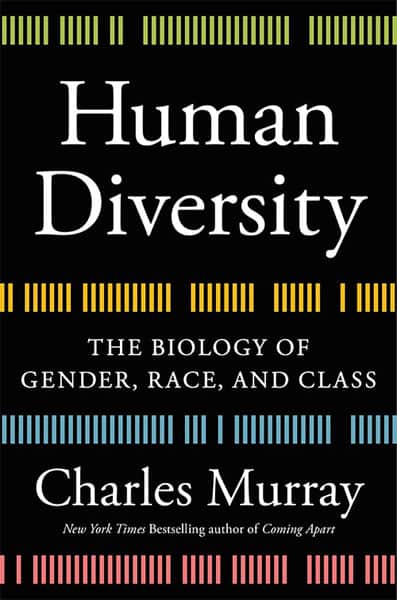NYT ‘Reviews’ Charles Murray’s ‘Human Diversity’
Jared Taylor, American Renaissance, February 13, 2020
In my review last week of Charles Murray’s latest book, Human Diversity, I predicted that the liberal press would be baffled by the book, either into silence or incoherence: “How do you honestly try to refute a systematic, intricate dismissal of your most cherished beliefs?” I asked, “Especially when, like most probable reviewers, you don’t understand the science?”
Yesterday, right on cue, the New York Times delivered what I predicted. Its review was written by Parul Sehgal, who has a Master of Fine Arts degree, and has written a lot about novels, poetry, and belles lettres but, so far as I can tell, has never read a science book in her life. She starts with a poke at The Bell Curve: “Yes, that Charles Murray, who in 1994 co-authored ‘The Bell Curve,’ with Richard J. Herrnstein, arguing in two notorious chapters that I.Q. differences between the races were mostly innate and mostly intractable.” That was 70 pages out of more than 800, but they were only ones that mattered to a lot of people.

Miss Sehgal then treats us to what she no doubt thinks is a devastating criticism: “In the years since its publication, the book has been roundly discredited on moral, political and scientific grounds. Reviewing ‘The Bell Curve’ in The New Yorker, Stephen Jay Gould called attention to the authors’ questionable use of statistics and cherry-picked data.”
Of course, it would be idiotic to try to discredit a scientific position on “moral” or “political” grounds, and even more idiotic to claim success. But does no one at the Times realize that Stephen Jay Gould is the last person to trot out as an authority on rigorous science? Gould was famous for accusing a 19th century race scientist, Samuel George Morton, of falsifying data to suit his biases. A careful analysis published in 2011 and reported by the New York Times showed that it was Gould who tried to falsify Morton’s methods.
Miss Sehgal continues her attack on The Bell Curve: “There have been debates about what I.Q. really measures (other than the ability to take I.Q. tests), and whether an individual’s I.Q. is as relatively unchangeable as the authors claimed.” Debates? She writes as if the fact that there were debates proves The Bell Curve was hooey.
Miss Sehgal finally gets to Human Diversity: “As with ‘The Bell Curve,’ we will have to wait for peer reviews to carefully sift through the science.” First of all, virtually all the findings reported in this book are already peer reviewed. But Miss Sehgal doesn’t need to wait for “peer reviews” to tell us it’s all rubbish, because she says Dr. Murray’s conclusions “regurgitate some of humanity’s most pernicious, wearying and stubborn stereotypes.” What did I say about trying to discredit a scientific position on moral or political grounds? This very attitude makes her unqualified to review this book. Alas, I fear it was the most important qualification the Times was looking for in a reviewer.
But Miss Sehgal is at her best at the end:
[T]he book’s most astonishing (and telling) declaration is on the first page. If “you have reached this page” — the first page, I remind you — “convinced that gender, race and class are all social constructs, and that any claims to the contrary are pseudoscience, you won’t get past the first few pages before you can’t stand it anymore. This book isn’t for you.” He continues smoothly: “Now that we’re alone…”
Now that we’re alone. This book is for the believers. Rigorous readers, skeptics, the unindoctrinated — you won’t be persuaded by “Human Diversity,” but why should that matter? You’re not even invited.
First, Dr. Murray was warning away two groups of readers. If you are hoping for differences among human groups that are “scary or earthshaking” or are “looking for bombshells,” you’ll be bored and should stop reading. Or if you are — just like Miss Sehgal! — convinced that anything that might support a pernicious stereotype is “pseudoscience,” the book isn’t for you. “Rigorous readers, skeptics, the unindoctrinated” are the very people for whom Human Diversity was written. It is only with the greatest ill will that anyone could think otherwise.
Sometimes the New York Times opens its articles to reader comments. Sometimes it doesn’t, especially when an author nakedly opens himself to ridicule. This review is closed to comments.















